Related Research Articles
The Amung people are a group of about 17,700 people living in the highlands of the Central Papua province of Indonesia. Most Amungme live in Mimika and Puncak, in valleys like Noema, Tsinga, Hoeya, Bella, Alama, Aroanop, and Wa. A related group lives in Beoga Valley, Puncak and they are called Damal people.

The Himba are an indigenous people with an estimated population of about 50,000 people living in northern Namibia, in the Kunene Region and on the other side of the Kunene River in southern Angola. There are also a few groups left of the OvaTwa, who the OvaHimba consider to be part of their tribe, but are hunter-gatherers. Culturally distinguishable from the Herero people, the OvaHimba are a semi-nomadic, pastoralist people and speak OtjiHimba, a variety of Herero, which belongs to the Bantu family within Niger–Congo. The OvaHimba are semi-nomadic as they have base homesteads where crops are cultivated, but may have to move within the year depending on rainfall and where there is access to water.

Kunene is one of the fourteen regions of Namibia. Its capital is Opuwo, its governor is Marius Sheya. The region's name comes from the Kunene River which forms the northern border with Angola. Besides the capital Opuwo, the region contains the municipality of Outjo, the town Khorixas and the self-governed village Kamanjab. Kunene is home to the Himba people, a subtribe of the Herero, as well as to Damara people and Nama people. As of 2020, Kunene had 58,548 registered voters.

The Cunene or Kunene is a river in Southern Africa. It flows from the Angola highlands southwards to the border with Namibia. It then flows in a westerly direction along the border until it reaches the Atlantic Ocean.
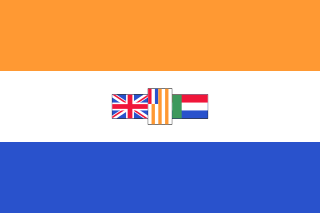
Kaokoland was an administrative unit and a bantustan in northern South West Africa. Established in 1980 during the apartheid era, it was intended to be a self-governing homeland of the Ovahimba, but an actual government was never established, and the territory was administered by the leaders of Hereroland. Like other homelands in South West Africa, the Kaokoland bantustan was abolished in May 1989, at the beginning of the transition of Namibia towards independence.
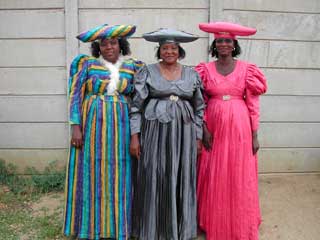
The Herero are a Bantu ethnic group inhabiting parts of Southern Africa. There were an estimated 250,000 Herero people in Namibia in 2013. They speak Otjiherero, a Bantu language. Though the Herero primarily reside in Namibia, there are also significant populations in Botswana and Angola, and a small number in South Africa. The Hereros in Botswana and South Africa are there because of displacement during the 1904 - 1908 genocide committed by the German Empire.
Awas Tingni is an indigenous Mayagna community of some 2,400 members on the Miskito Coast of Nicaragua, in the municipality of Waspam in the North Caribbean Coast Autonomous Region. Awas Tingni is located near the junction of the Rio Wawa and the river Awas Tingni in a densely forested area. In Mayagna, Awas Tingni means "Pine River" and denotes both the town and the river by which it is situated. Awas Tingni was named due to the large pine forest in the area, similar to the pine barrens of the mid-Atlantic United States.
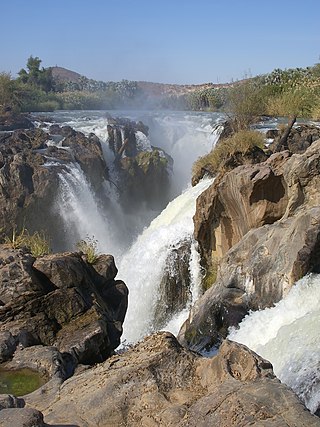
Epupa Falls is a series of large waterfalls formed by the Cunene River on the border of Angola and Namibia, in the Kaokoland area of the Kunene Region. The river is about 0.5 kilometres (1,600 ft) wide in this area and drops in a series of waterfalls across a length of 1.5 kilometres (0.93 mi), with the greatest single drop being 37 metres (121 ft) in height. The settlement near the falls is also called Epupa.
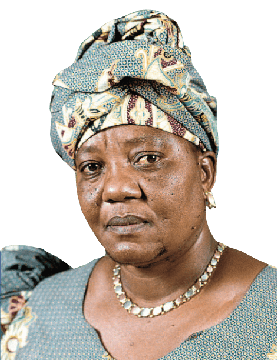
Angelika Kazetjindire Muharukua was a Namibian politician. An ethnic Herero from northwestern Namibia, Muharukua joined the South West Africa People's Organization (SWAPO) in 1979. She was a surprise choice by President Sam Nujoma for the 2nd National Assembly of Namibia in 1995 and remained in the National Assembly since. In May 2004, she was chosen to replace Marlene Mungunda as deputy minister of Women Affairs and Child Welfare, later renamed the Ministry of Gender Equality and Child Welfare.
Mukuru is the Supreme Creator (God) of the Himba and Herero people of Namibia.

Swartbooisdrift is a small settlement in the Kunene Region in the north of Namibia. It is situated on the banks of the Kunene River, at the Angolan border on the minor road D3700 and falls within the Epupa electoral constituency. Swartbooisdrift is populated by 150 - 300 semi-nomadic people of Himba and Herero descent, depending on the season.

The Recognition of Native American sacred sites in the United States could be described as "specific, discrete, narrowly delineated location on Federal land that is identified by an Indian tribe, or Indian individual determined to be an appropriately authoritative representative of an Indian religion, as sacred by virtue of its established religious significance to, or ceremonial use by, an Indian religion". The sacred places are believed to "have their own 'spiritual properties and significance'". Ultimately, Indigenous peoples who practice their religion at a particular site, they hold a special and sacred attachment to that land sacred land.
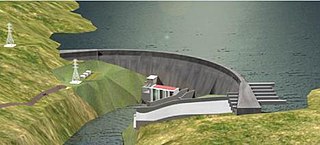
Barro Blanco is a gravity dam on the Tabasara River in the Chiriqui Province of Panama. It began generating in 2017 with capacity of 28.56 MW. Although the government had authorized the dam, it suspended construction in February 2015 after protests. The President of the Republic authorized the partial restart of construction in August 2015, but prohibited the filling of the reservoir pending a final agreement. Important issues concerning the dam are controversial, such as the question whether the indigenous communities in the area initially had expressed their support or their opposition to the dam's construction and how well they had been informed about the project and its impacts prior to expressing their views.
The HIZETJITWA Indigenous Peoples Organisation (HIPO) is a non-governmental organisation operating in Namibia and Angola dedicated to the improvement of the living conditions of indigenous people. HIZETJITWA is an acronym made up of the first letters of the names of the indigenous tribes that are the focus of the organisation: Himba people, Zemba people, Tjimba people and Twa people. These native, semi nomadic people live in the mountainous and semi deserted areas of North West Kunene in Namibia and Angola. Individuals belonging to the Herero people in northern Kunene and from the Omusati Region, are also members of HIPO. The executive director is Tjinezuma Kavari.
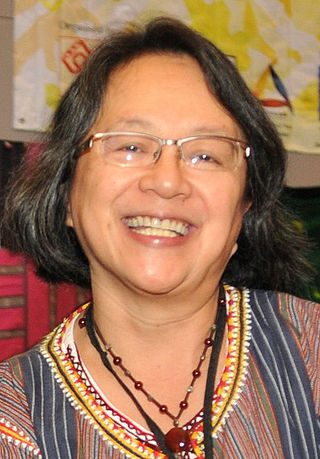
Victoria Tauli-Corpuz is a Filipino development consultant and an international indigenous activist of Kankana-ey Igorot ethnicity. From 2014 to 2020, she served as the third United Nations Special Rapporteur on the Rights of Indigenous Peoples.
Mohammed International Development Research and Organization Companies (MIDROC) is a mining and oil company owned by Saudi billionaire Sheik Mohammed Hussein Al Amoudi. It has operations in Europe, the Middle East, and Africa. Through its Corral Petroleum Holdings AB, MIDROC has become a major independent oil company.

Culture in Namibia is a blend of many different people and its culture and customs have absorbed both African and European elements and fused them into a blend of the two. Although the country is urbanising rapidly, a majority of Namibians still live in rural areas and lead largely impoverished lives. It is among these people, however, that cultural tradition survive most strongly.
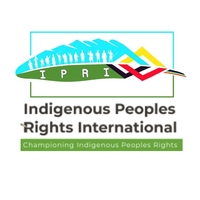
Indigenous Peoples Rights International (IPRI) is a global, registered non-profit Indigenous Peoples organization that works to protect the defenders of Indigenous peoples' rights as well as uniting and amplifying the call for justice and respect for them.

The Lega Dembi Mine is the largest gold mine in Ethiopia and is near Shakiso in Oromia. Lega Dembi has a yearly production of around 4,500 kg of gold and silver, and is owned by MIDROC. Pollution from the mine has resulted in environmental conflict that has exacerbated other political and ethnic conflict in the region.
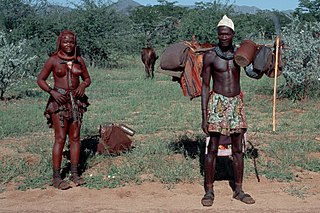
Okujepisa omukazendu is the polyamorous sexual practice of hospitable "wife-sharing" among the nomadic OvaHimba and OvaZemba peoples of Namibia's Kunene and Omusati regions. According to the practice, a man welcomes a familiar male guest to his home by allowing the visitor to sleep in the man's bed and have sex with his wife for the night, while the man sleeps in another hut or outside. The woman has little agency in the arrangement. The opposite arrangement, whereby a woman chooses a female friend for her husband to have sex with, exists, but is rare. The practice has been described as "generations-old", "centuries-old", and "ancient". The practice's justifications include belief that it deepens friendship and prevents promiscuity and jealousy in both sexes.
References
- 1 2 3 "Chapter 5. The Himba and Zemba People" (PDF). University of Pretoria. Pretoria, Gauteng, South Africa. pp. 118–126. Retrieved 2023-07-06.
- ↑ Bollig, Michael (2006). Risk Management in a Hazardous Environment: A Comparative Study of Two Pastoral Societies. New York City, United States: Springer US. p. 362. ISBN 9780387275826.
- ↑ Bollig, Michael (2006). Risk Management in a Hazardous Environment: A Comparative Study of Two Pastoral Societies. New York City, United States: Springer Publishing. p. 51. ISBN 9780387275826.
- ↑ "A group of the pregnant Zemba women in Opuwo, October 2017". Independent Travellers. independent-travellers.com. Retrieved February 8, 2018.
- ↑ "Declaration of the Zempa People of Namibia". earthpeoples.org. Retrieved 2 December 2012.
- ↑ "Namibia: Indigenous Semi-Nomadic Himba And Zemba March In Protest Against Dam, Mining And Human Rights Violations | Intercontinental Cry" . Retrieved 2022-09-10.
- ↑ "Statement of the Special Rapporteur on the rights of indigenous peoples, James Anaya, upon concluding his visit to Namibia from 20-28 September 2012" . Retrieved 28 November 2012.
- ↑ "Namibia: Indigenous semi-nomadic Himba and Zemba march in protest against dam, mining and human rights violations". earthpeoples.org. Retrieved 24 November 2012.
- ↑ "Namibia's Himba people caught between traditions and modernity". BBC News. 2017-08-30. Retrieved 2022-09-10.
- ↑ "German GIZ directly engaged with dispossessing indigenous peoples of their lands and territories in Namibia". earthpeoples.org. Retrieved 30 March 2013.
- ↑ Sasman, Catherine. "Himba, Zemba reiterate 'no' to Baynes dam". The Namibian . Retrieved 26 March 2013.